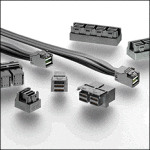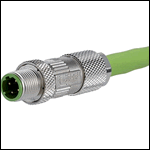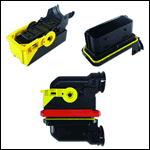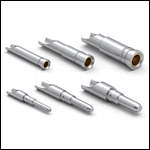How to Specify Nano-D Connectors
Ideal for small, rugged applications such as non-industrial robotics, here are some tips for how to specify nano-D connectors.
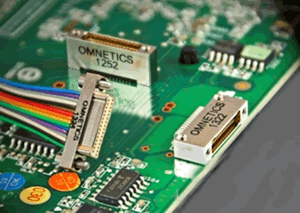 Nano-D connectors are often designed for use in small, rugged robotic applications beyond industrial environments. Within these applications, the emphasis on a smaller and lighter form factor intensifies. A key consideration is whether you can use a supplier’s line of standard off-the-shelf configurations, pin counts, and shell styles for fast delivery and repeatable end-product designs. Technical focus should include the quality of the pin-and-socket system and the nickel/gold plating on the contacts to ensure long use and multiple mating operations.
Nano-D connectors are often designed for use in small, rugged robotic applications beyond industrial environments. Within these applications, the emphasis on a smaller and lighter form factor intensifies. A key consideration is whether you can use a supplier’s line of standard off-the-shelf configurations, pin counts, and shell styles for fast delivery and repeatable end-product designs. Technical focus should include the quality of the pin-and-socket system and the nickel/gold plating on the contacts to ensure long use and multiple mating operations.
For example, nano-D connectors made of beryllium copper at 17200 ksi and tempered for continuous spring force with an open end provide better travel in compression and expansion. When the connector is hot, the copper alloy socket expands and the opening spring increases contact pressure; when the connector is cold, the socket contracts and the spring ends close but save excess stress on the spring to give the connector longer life. In high vibration environments, some connectors allow 10ns open circuit time, while the spring pin has exhibited zero opens under vibration testing. The open-end spring pin exceeds 2000 mates/de-mates in rugged testing. The tapered spring design of the interface has four continuous points of contact in the bow shape so it lasts longer and is stronger in all cases.
Other considerations when specifying nano-D connectors include the following:
- To ensure long life, the contacts should be nickel/gold-plated after forming, per ASTBM B488 Type II, with 50 microinches of nickel and 50 microinches of gold that is controlled by XRF measurement and checked for non-porous surfaces. (Note that other plating systems are cheaper and perform similarly.)
- Nano-D connectors with metal shells are lightweight and withstand very high shock and vibration, well beyond many of the heavier and larger connector designs. Plastic-body nano-D connectors can be used but may be more brittle and difficult to lock shut after use in some environments.
- Pre-wired standard and off-the-shelf nano-D connectors are available in multiple pin counts and have board-mount and panel-mount receptacle systems to match. SMT receptacle versions help with fast assembly on miniature modules being assembled for prototypes.
Applications for nano-D connectors in robotic systems span the industry from remote surgery equipment to animation of characters in amusement parks and on to wirelessly controlled camera equipment. The medical industry uses nano-D connectors in prosthetic systems to help control motion of robotic hands and legs. More and more household devices are adding robotics to help sweep the floor, ionize the air, and even turn on and off security locks from your phone. As robotics expand their reach beyond industrial systems, design engineers must remember to specify connectors in which the materials and standards meet the specific application level. Roving and flying robotics will need to meet vibration and ruggedness expectations while security-oriented robotic designs may need surveillance-related packaging and cabling. As applications expand, the specification method will have to be tailored to the need.
Author Bob Stanton is technology director at Omnetics Connector Corporation.
